Raver's Tool-Kit No. 1: Closed-Eye Visualizations & Internal Experiences of Music
The Rise of the Monolith at the End of the 20th Century
Years ago I came to believe that raving is more than mere entertainment. For some of us, these events are central in our lives. Raves, clubs and undergrounds help us to understand ourselves better, to find our friends, to be creative and to commune with an ineffable “Otherness”; Motherbeat as I call her. Over the last six years I have been fortunate to be invited to give a talk all over the world titled “More Than A Party”. Through these sessions I have identified and discussed the techniques I think ravers can—and do—use to elevate their raving into something meaningful and spiritual. In each edition of this column, I will share a practice or technique from what I now consider my “raver’s toolkit.” This kit has helped me for decades to have extremely powerful experiences of music and togetherness both on and off the dancefloor.
Watching an online DJ entertainment site like Boiler Room, Lot Radio, or Hör, with the DJ at the center of the screen, one might get the impression that dance parties are basically about watching a great performance. On some of these sites the DJ is clearly lit and surrounded of sea of bodies in motion that are utterly transfixed by the performance. In other cases the DJ is the sole person in the video. I love to watch a great and very technical DJ play and enjoy these sites (with some important caveats) for their documentation of the art of mixing, among other things. I also think they can help DJs share their art and build a reputation. That said, my formative rave experiences had little to do with watching DJs. When I went to parties I would close my eyes when I danced or stare for hours into huge stacks of speakers—black monoliths. In doing so I experienced something profound and life changing—something both communal and subjective that challenged what I thought I knew about the world. Speaker stacks helped me to learn (and perhaps remember) that nature and music are more animate and full of mystery than I was taught and that the internal experience of music triggers profound changes in psyche and physiology.
What happens when we close our eyes and listen to music? In the simplest sense, closing our eyes helps us focus. Some of my musician friends close their eyes when they work on music and I do as well, especially when I am engineering a track. I shut my eyes because I am trying to focus on the clarity and frequency positions of all the sounds both individually and as a sum. Engineering is like looking at a completed puzzle and trying to see the whole as a group of pieces rather than the composite image. In other words, it is the opposite of what your brain naturally wants to do until you train it, and even then, it helps some of us to close our eyes.
Raves are stimulating. Same is true for most festivals and clubs. In my early days we usually danced in warehouses with minimal lighting but even back then there was still a lot of stimulus due to all of the information emanating from the collection of bodies and interactions—sweat, pieces of conversation, dancing.
When do we close our eyes normally? Usually to rest or sleep. So closing our eyes in a room full of hundreds of people to the loudest most stimulating auditory experience of our life is in some sense not the most natural thing to do! But therein lies the magic…the little tweak…the act of conjuring, because the music has excited us deeply yet when we close our eyes we make a choice to look inside ourselves as we do when we prepare for sleep.
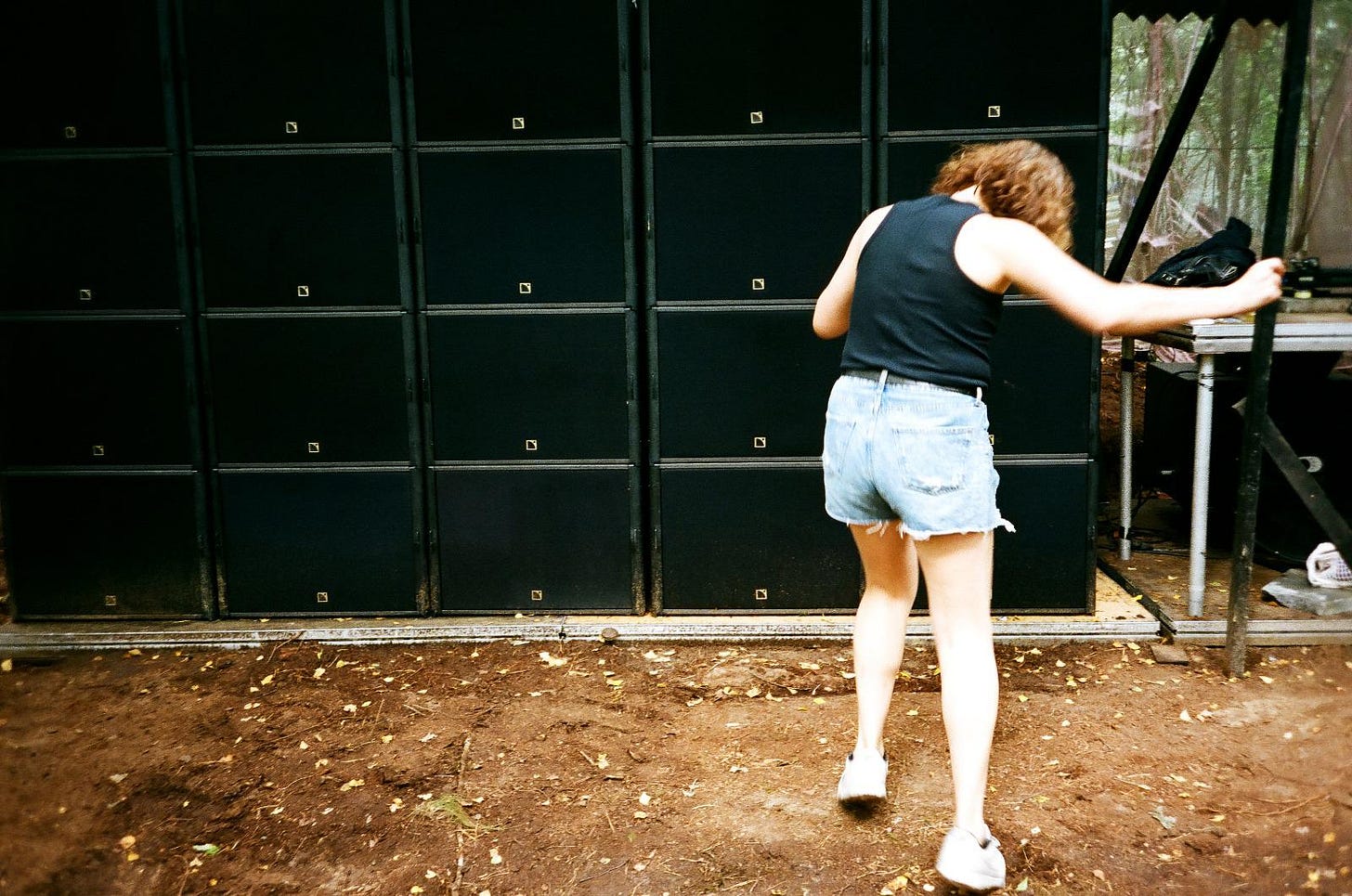
Closing your eyes unlocks your imagination and the raw power of consciousness. What starts as just blackness and sound soon transforms. Psyche comes to the forefront. You might start to think about the past. You might start to process your emotions. Recursive thoughts may fade as the intensity of the subjective moment takes over. You might move through negative feelings or forgive someone. And you might start to see things.
My visuals take different forms. The simplest are stimulated by the lights bleeding through my eye lids and the interesting artifacts and trails of light which remain as the lighting stobes and roves through the room. But the visuals can get more interesting. Sometimes I see a structure, like a spinning mandala made of transforming intricate light structure that seems to synchronize with the music. Sometimes the visuals are familiar things like eyes and snakes, something akin to the work of Alex Grey but with deeper levels of motion and abstraction—like several of his paintings morphing into each other.
[This video does a good job of simulating how structures and light can start to transform into a spinning mandala]
My visuals come on harder with psychedelics and perhaps I trained myself to see visuals with these substances. I can’t know for sure but I have a memory from childhood which suggests kids might be able to visualize. I remember in Kindergarden during mandatory “time out” when I would put my head on my desk, close my eyes and see infinitely complex structures of light. Were some of the other kids seeing this too? At some point soon after I lost this ability but I would find it again in my teenage experiments with seratonergic psychedelics. I think some humans have this ability and psychedelics can just help unlock it. Although in this regard it is important to note that all bodies are different and some people find their trips to be more psychological and physical than visual.
I hesitate to call my behind-the eye visualizations “hallucinations” since we assume hallucinations are defined as seeing something that isn’t technically or materially “there.” What if these visions are not pure imagination? For example, what if what we are seeing is the music in some real sense. Do your images respond to rhythm and emotion? They do for me. What if these thoughts and images also reflect our psyche? They could be imprints of our memories and traumas, played back to us through visual interpretation like a needle reading the etched eternal grooves of a vinyl record — you don’t perceive the sound you hear off a record as an interpretation of little rolling hills of hardened vinyl, but that’s what it is.
Perhaps in these visualizations we can see the future at an admittedly low bandwidth. I remember when I started touring my visions would be thousands of eyeballs staring at me as they formed on undulating oceans of structure behind my eyes. Being very honest, these visions were disturbing at the time and I struggled to interpret them. Now it think it was my body preparing itself for a public life which would be filled with a strange mix of glory and contradiction, including both challenges to—and affirmations of—my underlying sense of self.
There is another possibility. Maybe, just maybe, sometimes it isn’t our mental projections we are seeing in the visionary state but something else; something active in nature that we can’t usually access or interact with using our normal sense ratios. The visions could be archetypes and symbols, but maybe what we see is something less sapien. We’ve evolved our senses to survive, which means the default mode network in our brains is tuning out a lot of information we receive from nature. According to cognitive scientists like Donald Hoffman, our brains filter reality so deeply that literally everything we see is not at the base level of reality. In other words, our brains are like simulators that translate information into structures we can interpret to survive and this is part of our evolutionary history.
As strange as it seems, perhaps not all visualizations emanate from us. Structures in nature like leaves and wood grain have a stronger black point, more contrast, and deeper relief on moderate doses of psychedelic mushrooms. That’s probably because in our normal state, the default network in our brain doesn’t want to devote too many cognitive resources to fine graining every detail as we try to navigate our ordinary lives…it simply overwhelms the system. Try to do a mundane task in a state of astonishment and awe, it isn’t easy. In deep states of trance the connection to what we normally perceive is breached/pierced/transcended, such that in the visualizations we may perceive that we are interacting with a profound “Otherness”, or as Terrance McKenna called it “the Wholly Other.” I refer to it sometimes as “the Mushroom” (capital M).
Now, this idea of closing your eyes to dance is all good and well in the abstract, but it hard to close your eyes for the duration of a party and doing so can cause disequilibrium or bruised neighbors. That’s where the monoliths come in…
The monoliths of speakers at parties (if you can find one that has them) are important for a number of reasons. First and foremost, a traditional black speaker tower and a dark room are a great canvas for projections of psyche and visualization—-staring at black tower in a dark room is about as close as you can come to closing your eyes without actually doing it. A lot of parties are crowded so closing one’s eyes for an entire dance session just isn’t practical or safe.
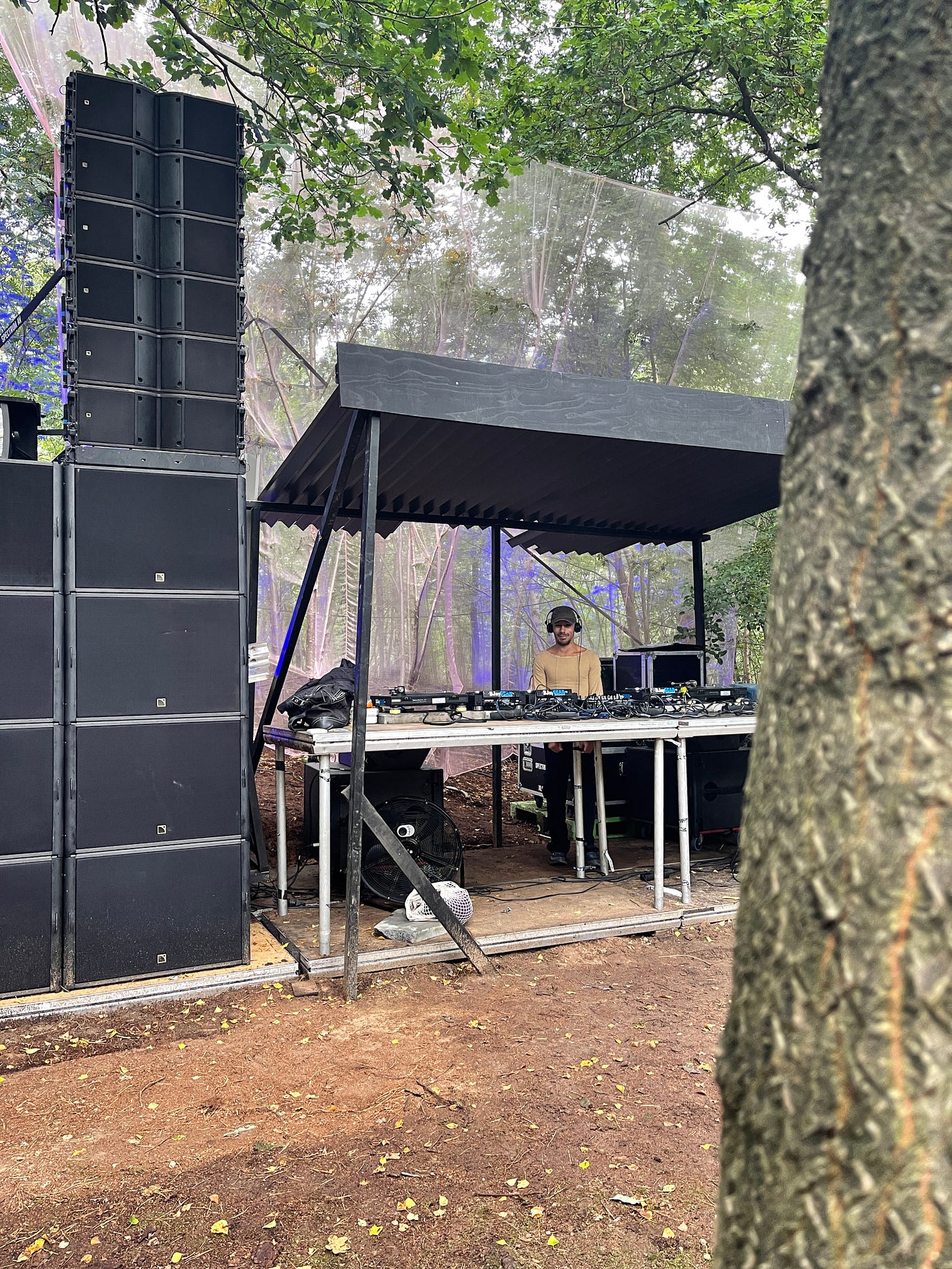
But just as importantly the monoliths serve as a point of focus. Not everyone visualizes. But for all of us, the monoliths act as symbols to concentrate upon—to behold. Symbols allow humans to convey complex ideas, record information, and transmit knowledge across generations. They serve as a tool for communication and enable humans express abstract concepts, religious beliefs, cultural practices, and even record historical events. Symbols are the memes of the ancients. Speaker stacks have had power in my life and in the lives of so many ravers over time. Therefore they are a symbol of the rave experience; artifacts of the dance. As professor of religious study Diana Walsh Pausulka discusses in her book “American Cosmic,” we can have a non-instrumental relationship with technology. I have found this to be absolutely true with the speakers. Instrumentally, speakers amplify music. Non-instrumentally they symbolize our technological future and a powerful spiritual aspect of the rave experience —- our communing with sound. At the same time, they also represent a return to nature and the idea of the centrality of the sacred drum reconnected to us through the medium of technology.
Ever notice that sub stacks create a wind if you get close enough? In a world of of music sold for entertainment and commodified to sell products, the speaker stack reminds us of the pure power of sound—-the thunder in the forest, the ocean crashing over billion-year-old rock face, the avalanche on the mountain. Octo Octa (Maya) calls certain types of house “tectonic” (as in “plate tectonics”) and this power of sound is what she feels these tracks conjure, intentionally or not; a kind of House music reminding us that the earth literally subsumes and excavates itself, in a slow process that may eventually consume our technological gadgets, our buildings and the other artifacts of our culture.
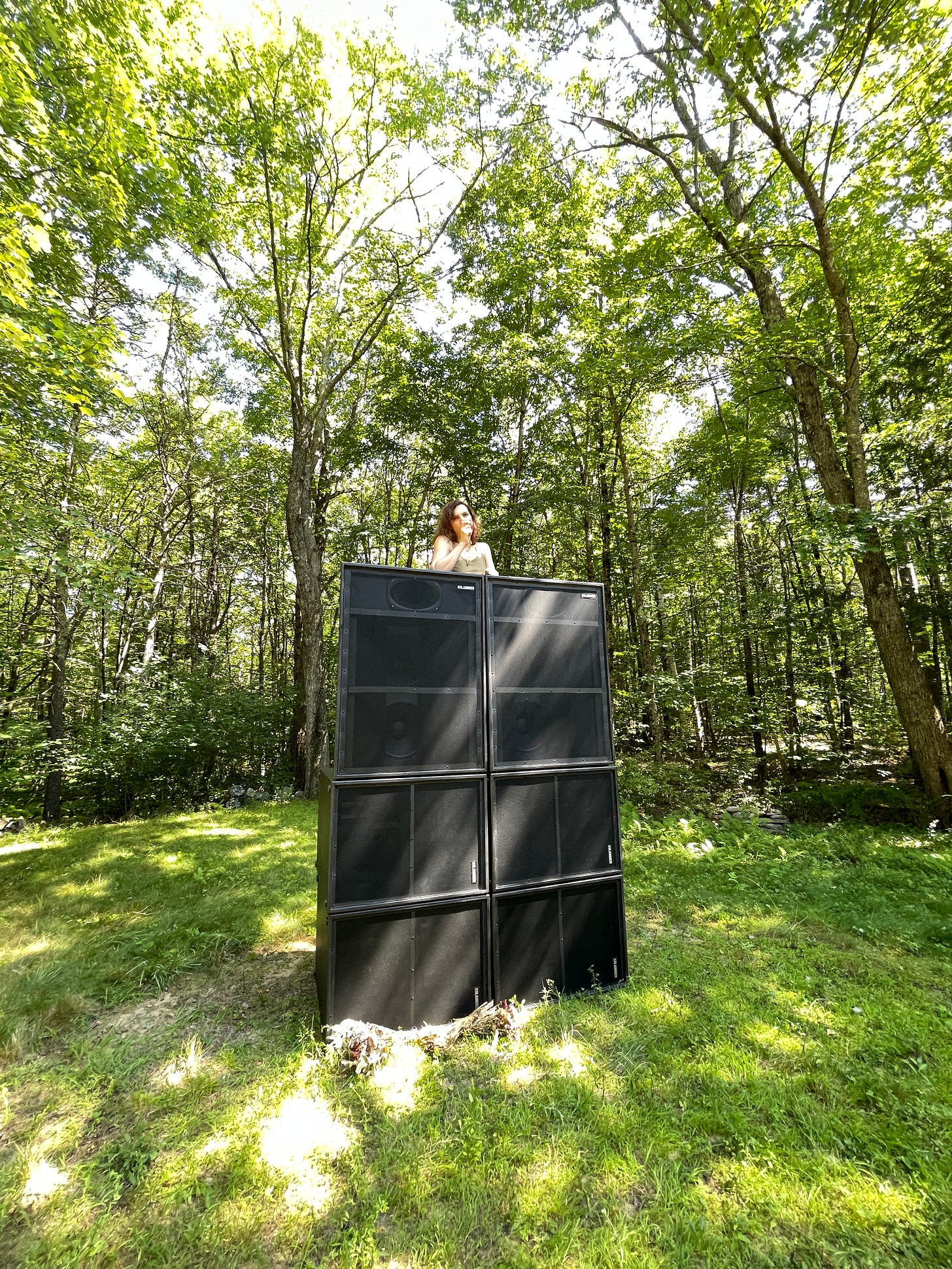
The speaker stacks symbolize in the strongest and most blunt way possible that music is the central experience of a rave and that we are there to behold the beat. Importantly, speaker stacks create a point of focus other than the personality of the DJ, which many of us find refreshing even if we love DJing or are DJs ourselves. This observation isn’t meant to be self-eviscerating—great DJs are awesome to watch but these parties are also about other things including psychedelic journeys, investigations of self, giving permission to the body, building new communities and on-and-on…
(quick clip. of die-hard ravers in morning hours of a party in 1994 dancing in front of monolithic speaker stacks)
If you haven’t tried it, next time you are at a party wear some proper earplugs (proper meaning plugs fit with a filter for safer and clearer music listening at loud volumes) and find a nice spot close-ish to a speaker. I suggest getting protection with roughly -26 dB of noise reduction. If it is too crowded or too loud to dance by the speaker, find a spot in the back or the side and see what happens. Give it time. Definitely leave your chatty mate at the bar.
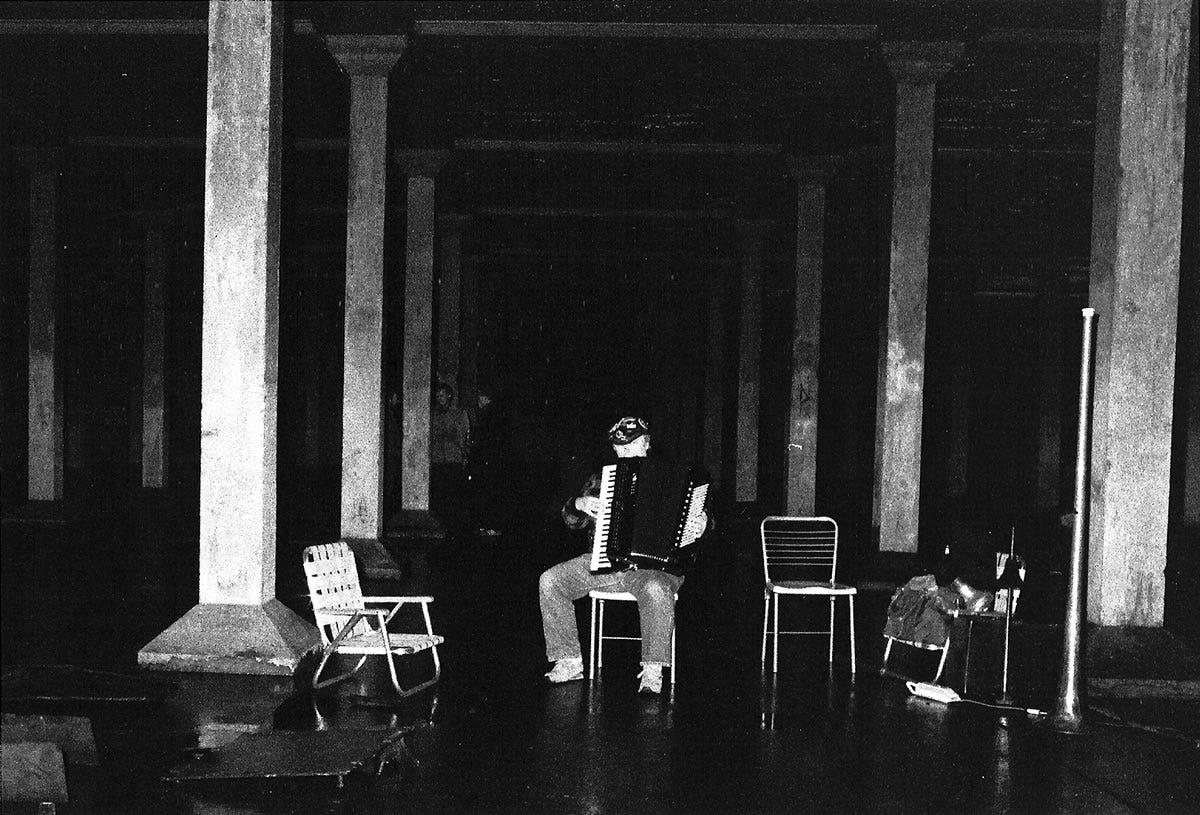
Intentional durational listening can stimulate one of the most healing experiences of nature a person can have in our overstimulating world. Musician and teacher Pauline Oliveros believed in such “deep listening”, many before her believed in it, and you wouldn’t need to convince a die hard raver. Dance culture’s often expressed appreciation for long DJ mixes demonstrates that durational listening isn’t just an ideal, it is an actual practice deeply ingrained into many people who love electronic dance music. Take your time with deep listening & visualization at parties. Even if the only result is that you have more direct and immersive experience of music, it is still well worth giving it a go.
If you throw parties consider hiring a killer sound team to build some monoliths at your event. In doing so you will make the experience of dancing in front of the speakers a priority. So many events I attend have a crowd control fence in front of the speakers, effectively cordoning the speakers off from the dance floor. This is usually to “protect the speakers” but honestly most modern club systems are robust and built like tanks. If safety is the concern, set limits on the volume and use ratchet straps or other means to secure the stacks from falling on dancers.
It is common in clubs and outdoor events to suspend the mid and top speakers from the ceiling or scaffolding, which spreads sound more evenly through the dancefloor. But such configurations achieve this width and depth at the expense of the stack as a balanced single point of sound emanating for the speakers dancers. Personally, I prefer megalithic sound sources. I refer to stacks as providing “single point sound” since all frequencies are projected from what we perceive as a single point of origin.
For more on what these Monoliths unlocked in me stay tuned for further installments of the Raver’s Toolkit. If you want to share any comments, corrections, or tales of speaker-induced trance states, message me at journalofmotherbeat@gmail.com.
- Eris Drew
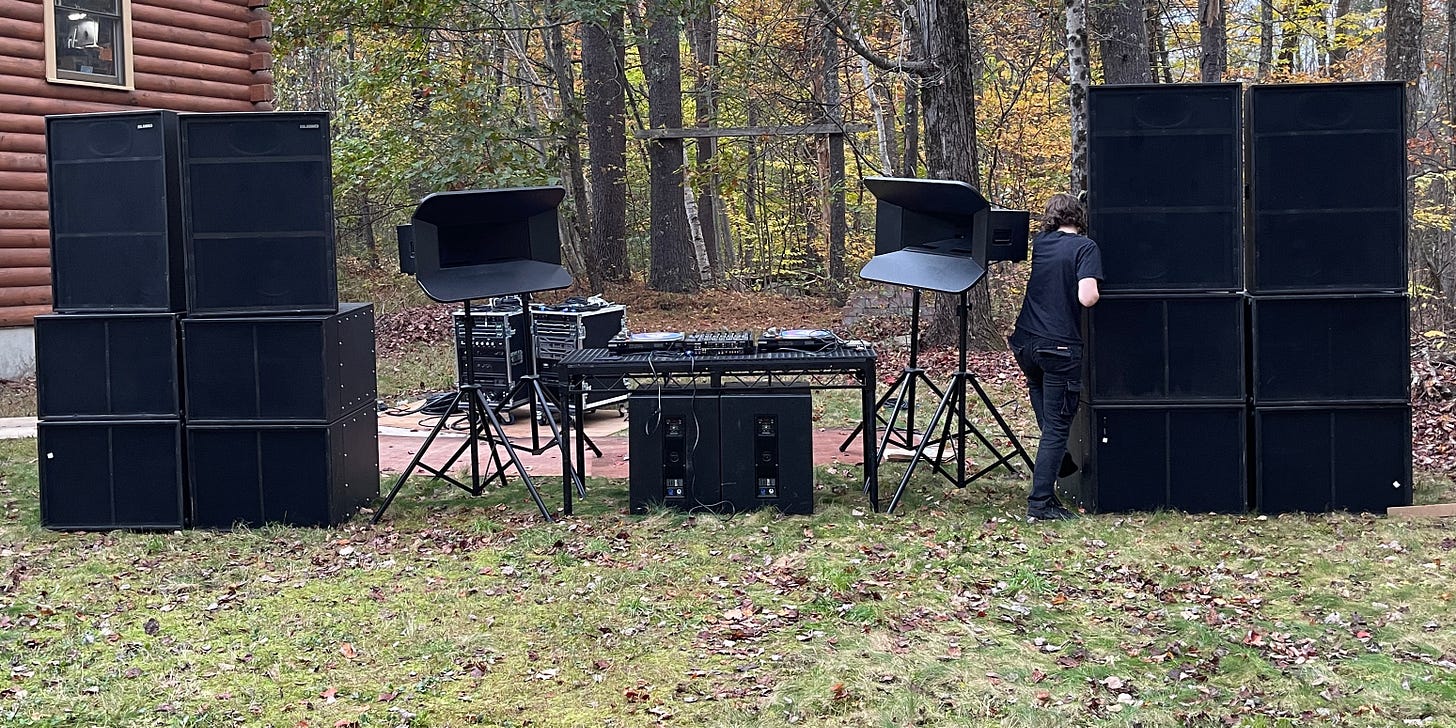




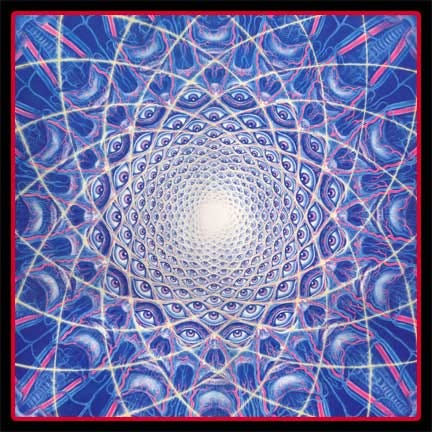
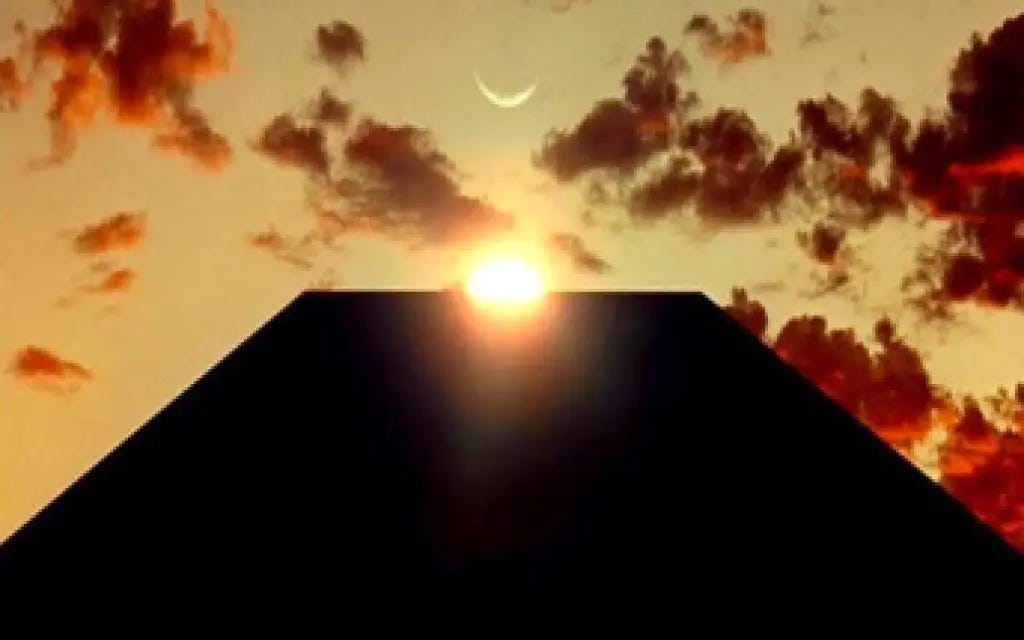
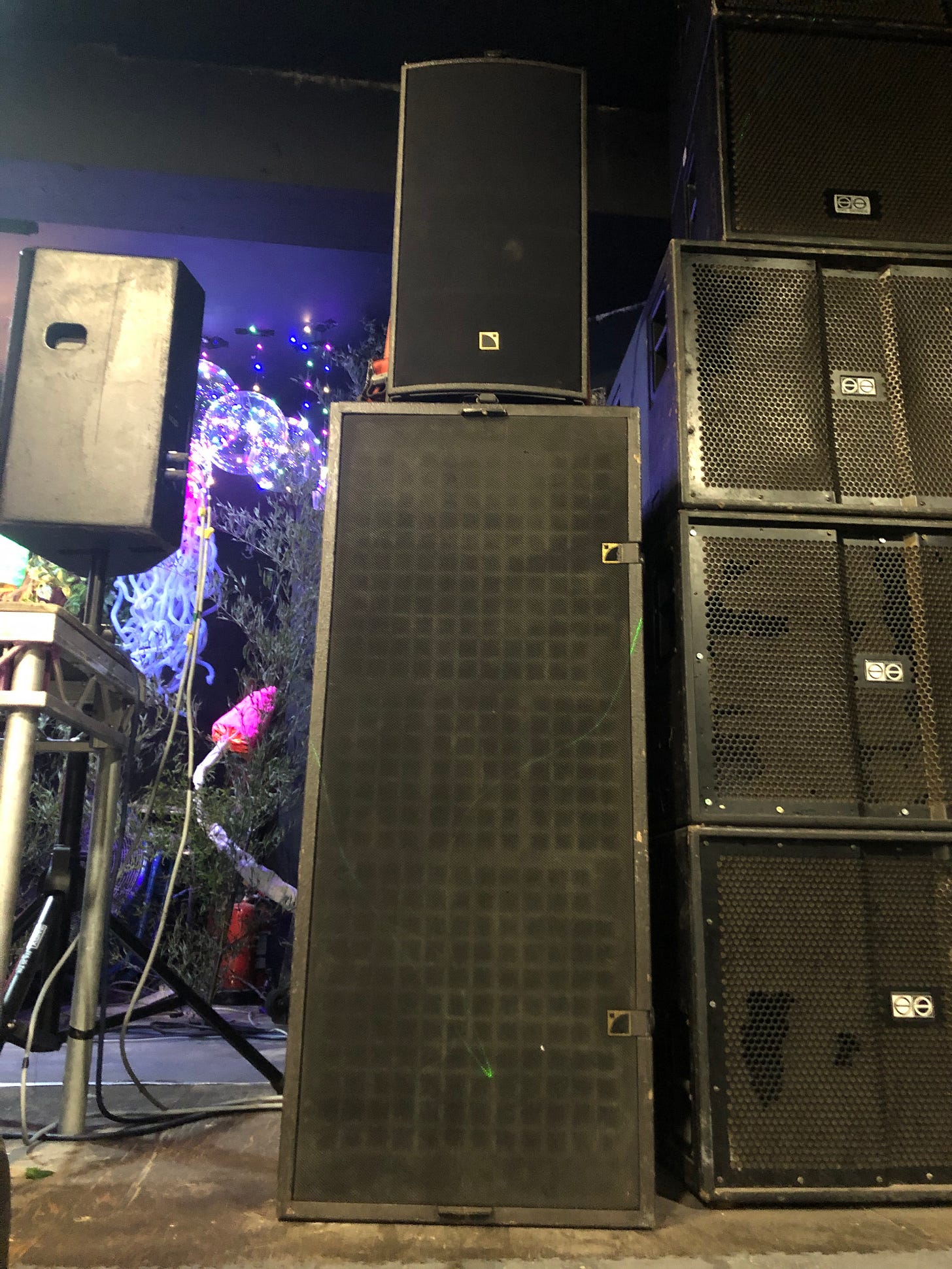
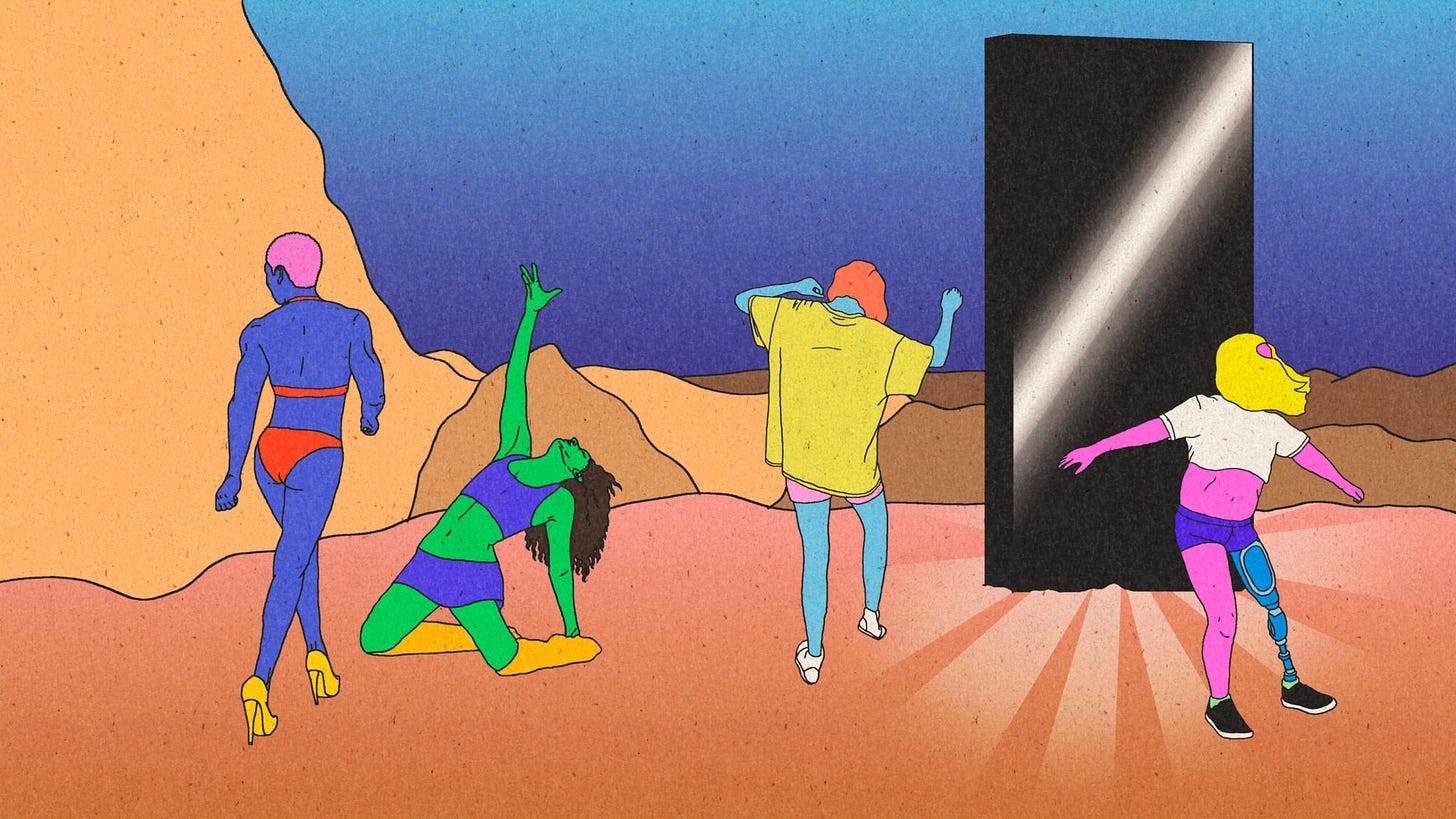
I love this piece, and I’m really excited about your newsletter. Thank you for sharing!
Whether most ravers are conscious of it or not, we are creating a sacred ritual space at raves. In it, we re-inhabit the primal matrix and tap into an ancestral way of being - embodied, joyfful, non verbal, non rational, liberated, wild, and free.
Great to read your thoughtful writing.
Love the idea of the speaker stack as a contemporary monolith—I'd never thought of it in that context.
You really captured why giving yourself up to the music creates the opening for a profound experience, based on deep listening and dancing, movement. Also, so nice to see Pauline mentioned here, a dear friend of my dad. Staring at the person who's providing the music all night really reduces reduces the possibility of a profound experience, collectively or within ourselves. Just like never turning off the screen while making music.
Thank you!